We have had a lot of foggy days and much higher than normal temperatures, but still it snowed on February 28th. The skies cleared on the 29th and the snow disappeared.
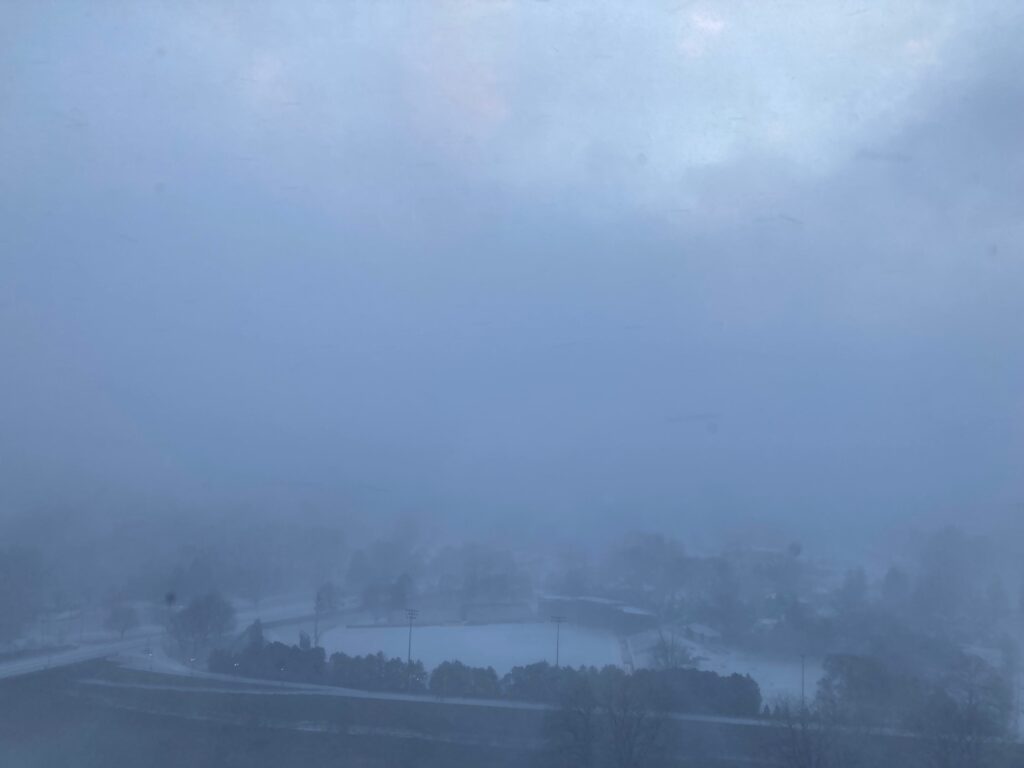
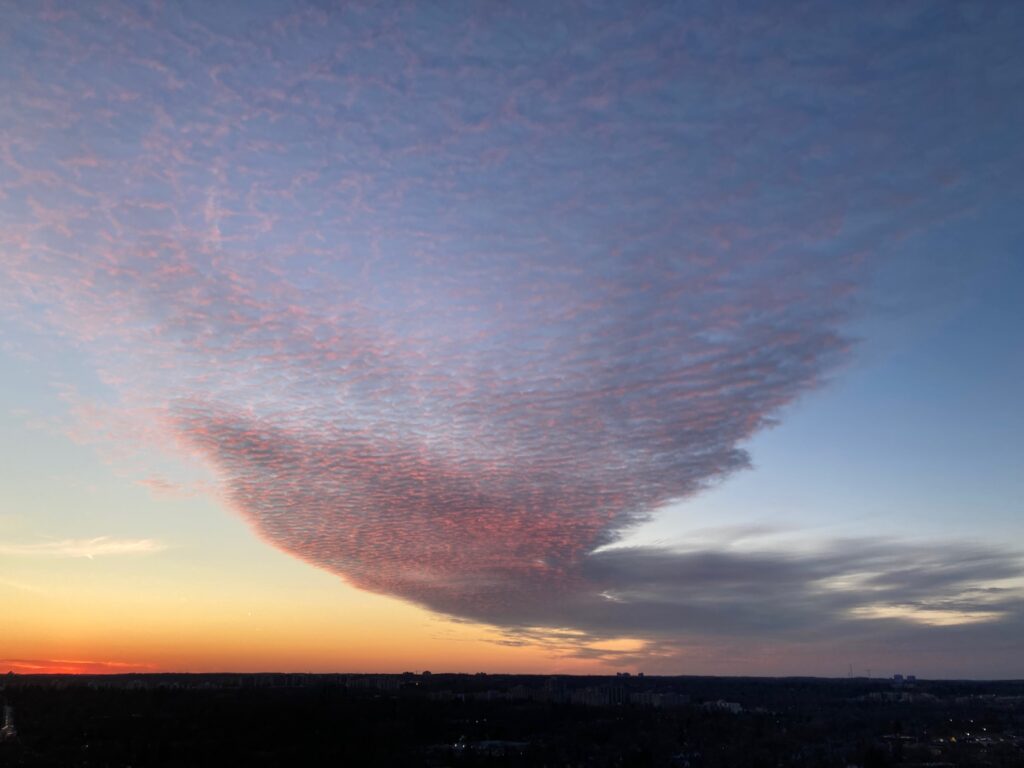
On March 1st, we headed to Gibbons Park. The warmer weather has brought the early arrival of some migrating birds. As we walked the path along the Thames, we heard Red-winged Blackbirds calling, but did not hear or see other birds aside from the ubiquitous Canada Geese and Mallards.



We decided to check on the Great Horned Owl that nests every year in the snag of one of the giant willows in the park. On our way through the park, we caught sight of a woodpecker that turned out to be Yellow-bellied Sapsucker – another early arrival. Here you can see how the bird came by its name.

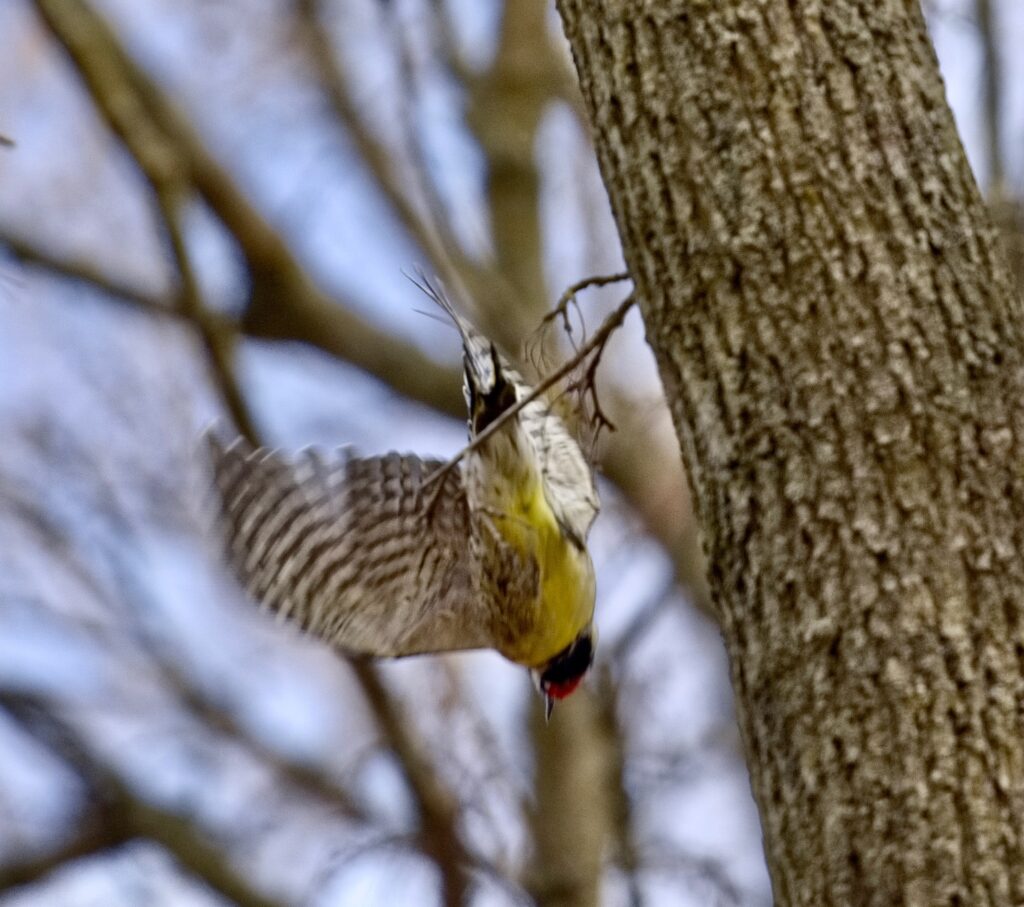
When we got to the owl’s nest, we could only detect the wisps of the owl’s ears. These technically are not ears! One theory is that the tufts on the owl’s head serve as camouflage because they have the appearance of broken vertical tree branches when the owl sits upright.
Owls’ ears are located at the sides of their heads, behind their eyes. Audubon.org advises that many owl species have asymmetrical ears, openings located at different heights on the owl’s head that are hidden by feathers. This ear placement allows them to pinpoint the location of sounds in multiple dimensions, especially useful when hunting.
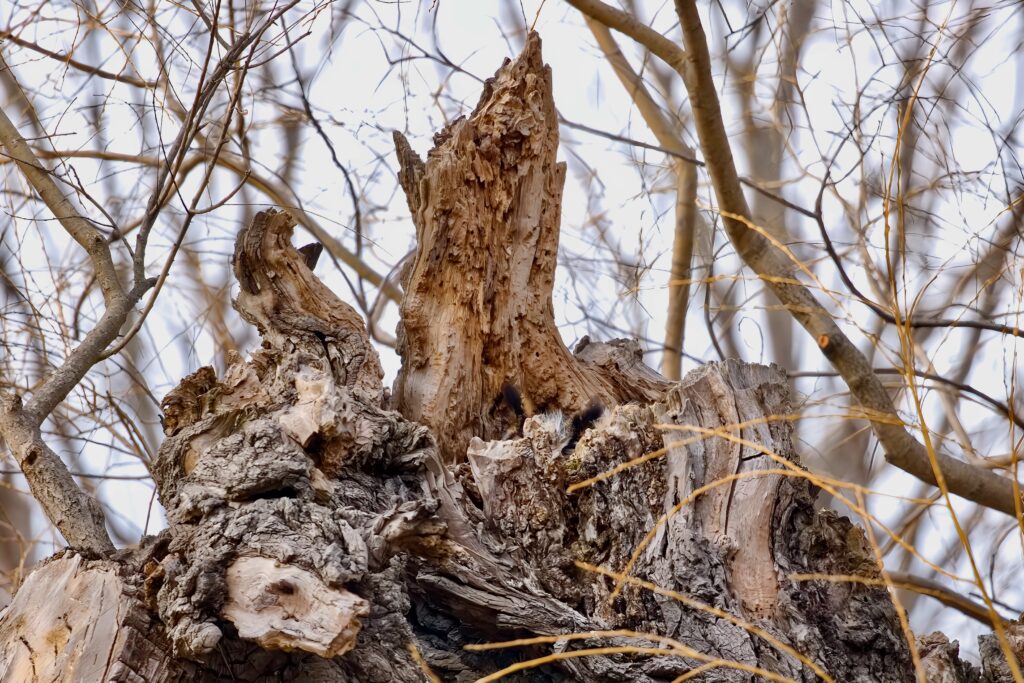

On March 4th, we went to Westminster Ponds where a Cackling Goose had been spotted. This would have been a “lifer” for us. Of course, there was no sign of a Cackling Goose when we were there. (A Cackling Goose looks like a Canada Goose, but is smaller and has a much shorter neck.) There was a variety of other waterfowl on the pond, but they were very far away. Of course.
We spent time along some of the paths around the pond, but abandoned our walks each time the muddy paths became deeper and wetter.
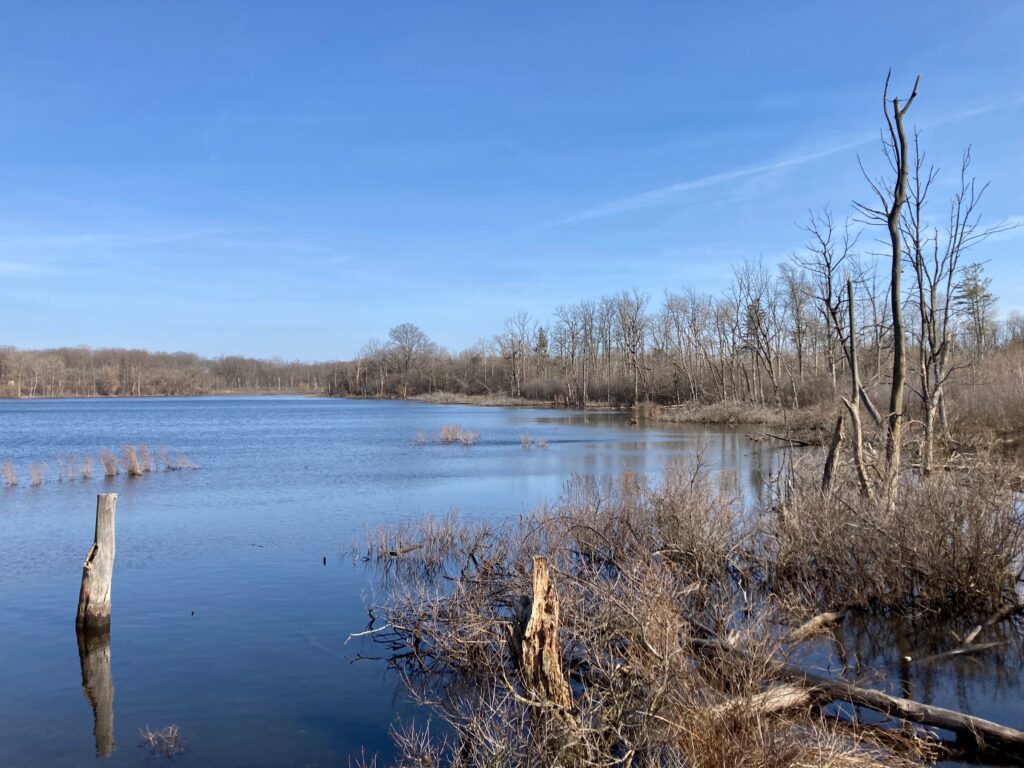
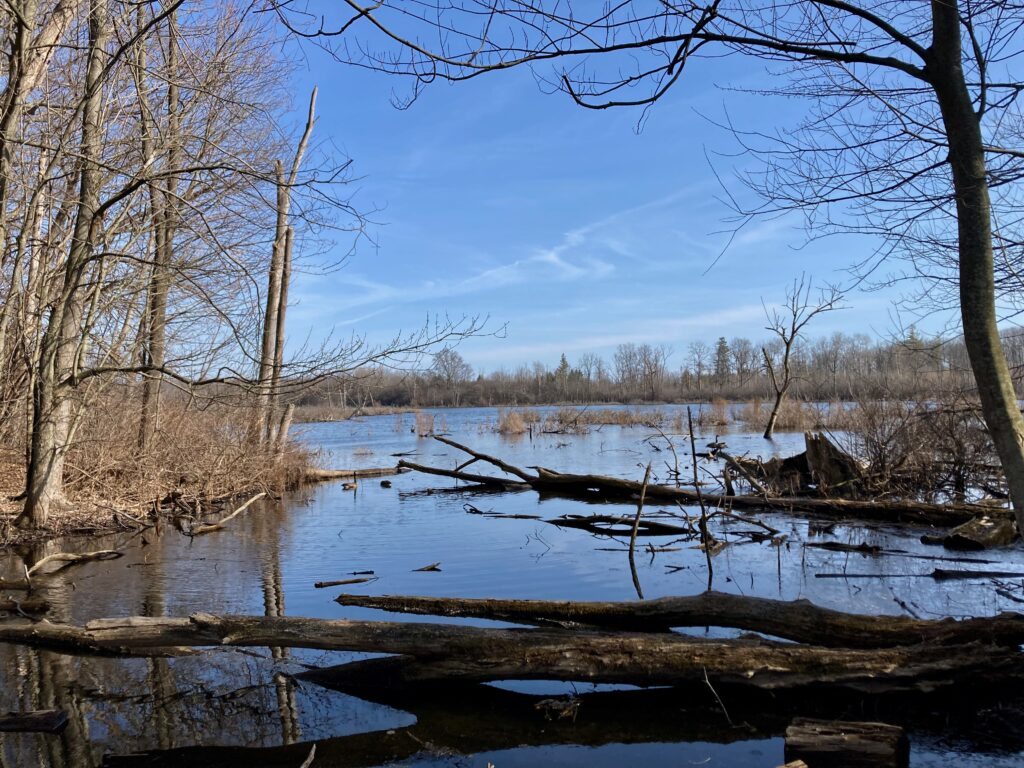
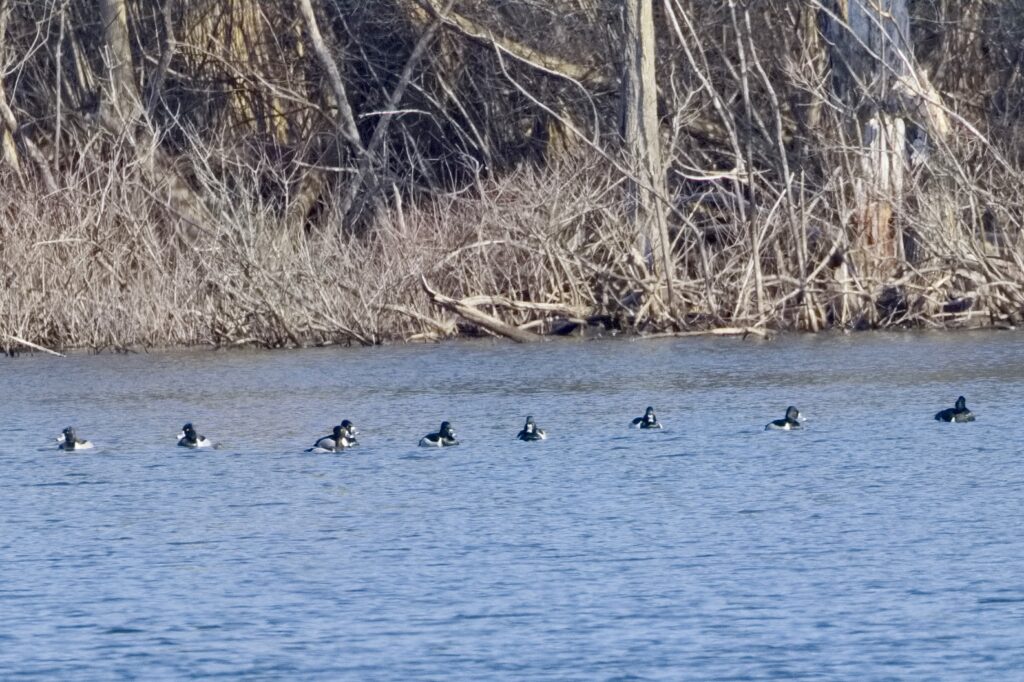
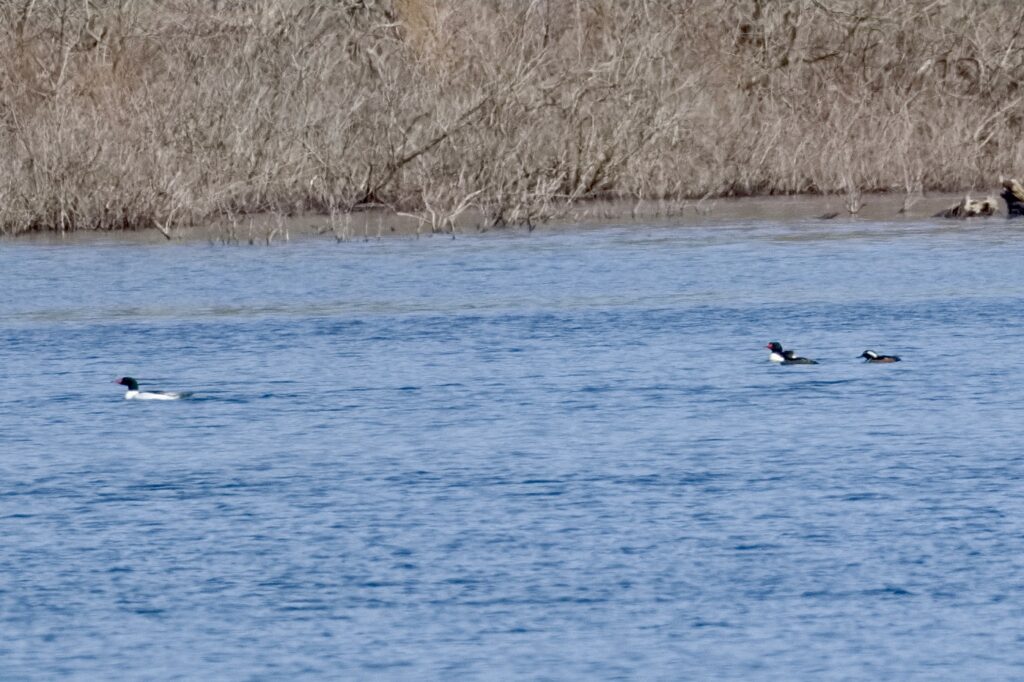
On March 7th, the sun was shining and we went with friends to see Tundra Swans at the Aylmer Wildlife Management Area. The swans had been stopping over there for the past week or more, but there were none to be seen. In addition to Canada Geese and Mallards, there were a few other waterfowl on the water that turned out to be Gadwalls and Green Teals once we could decipher our blurry photos.
Although we were disappointed, we were soon treated to the sight of three different raptors soaring overhead. We recognized the Northern Harrier and the Red-tailed Hawk, but the third bird was less familiar. Its very distinct markings made it easy to identify once we had our bird guides in hand – a Rough-legged Hawk, probably a light morph juvenile. Rough-legged Hawks spend the summer on the Arctic tundra, but winter from south of Lake Superior into the southern U.S.

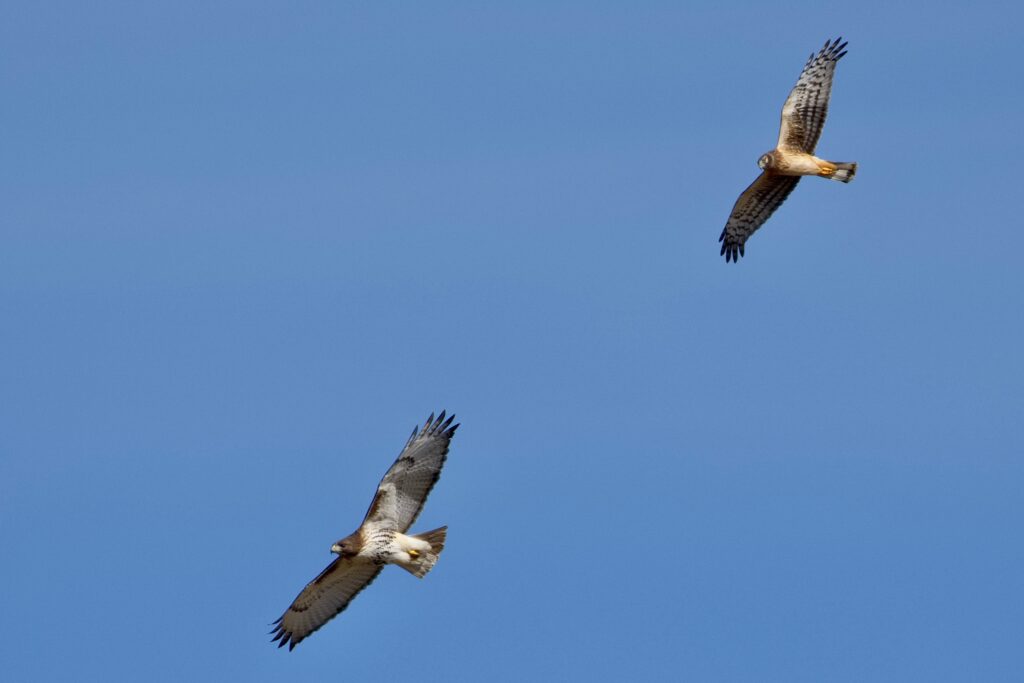
Red-tailed Hawk
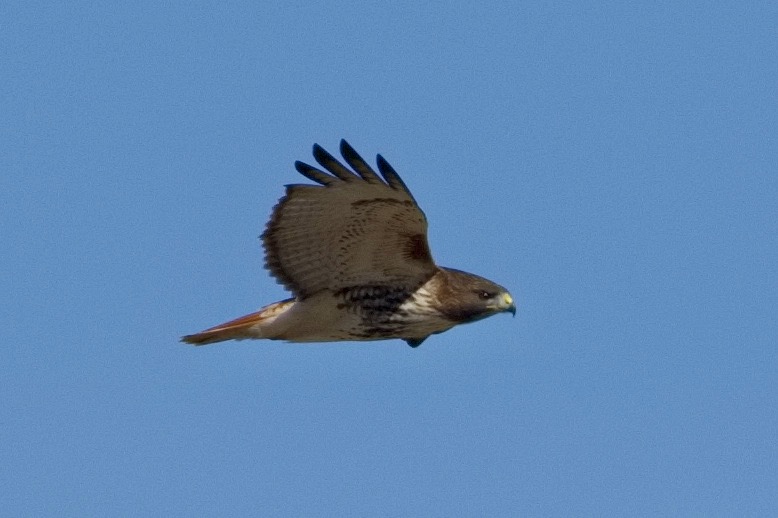

Rough-legged Hawk with distinctive “wrist patches”

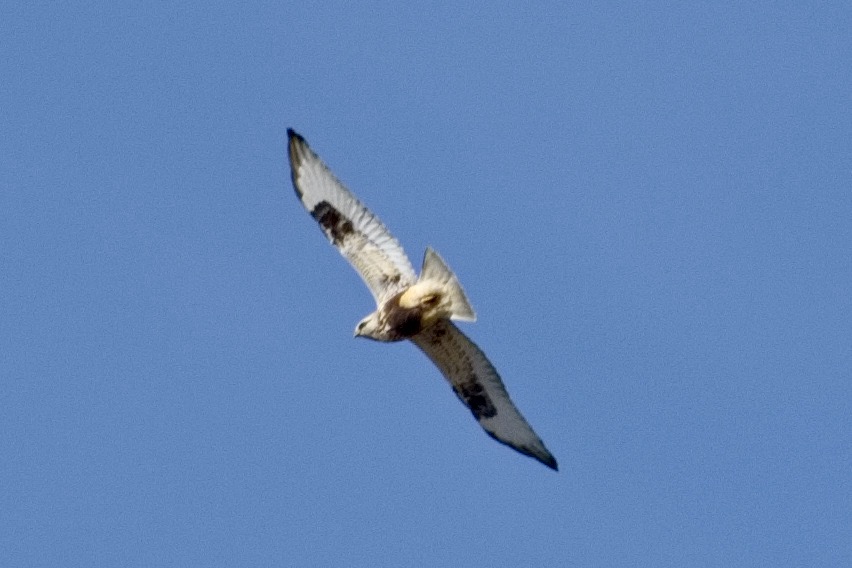
We took to the paths, but found only a few other birds. Some of the wintering birds seemed to have already departed. A European Starling perched on the newly erected Purple Martin houses. A Downy Woodpecker drummed on a far-off snag. Blue Jays dominated the bird feeders.



As we left the viewing shed, our sharp-eared friends detected the calls of Sandhill Cranes. We made it into the open in time to see a flock of the cranes steadily crossing the sky. Another wonderful sighting!
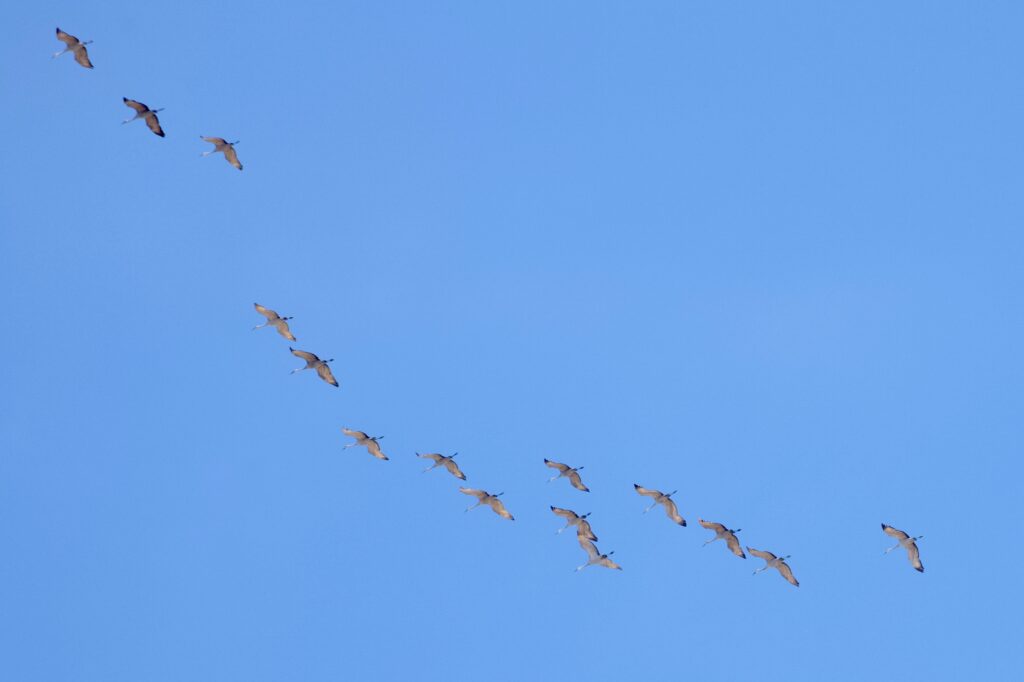
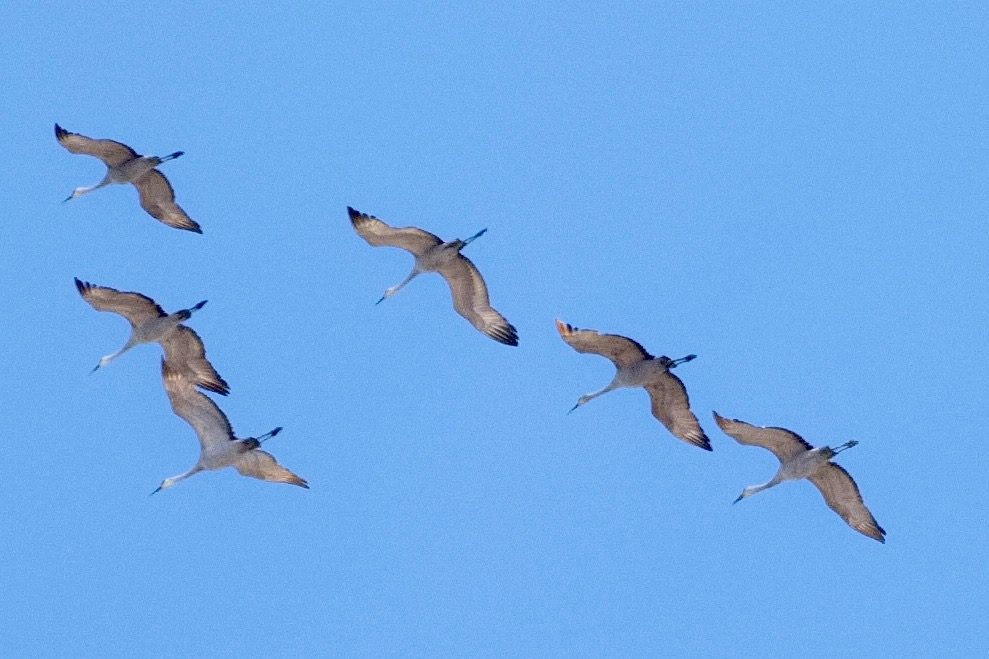
Our final sighting for the day was a pair of Mourning Doves, billing and cooing and sitting on a nest under the eaves of our friends’ neighbour’s house.
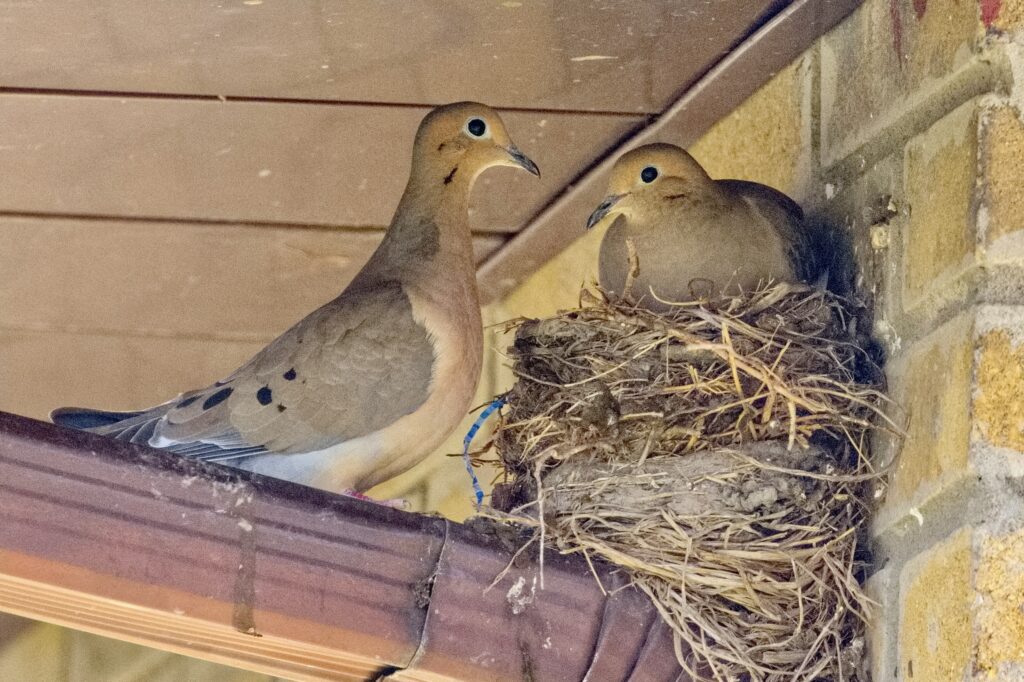
We will try again next week to see the Tundra Swans.
Songs About Sunshine
We “borrowed” the idea of providing a number of songs that are related only by their titles. For years, Randy Bachman hosted a CBC radio show called “Vinyl Tap”.